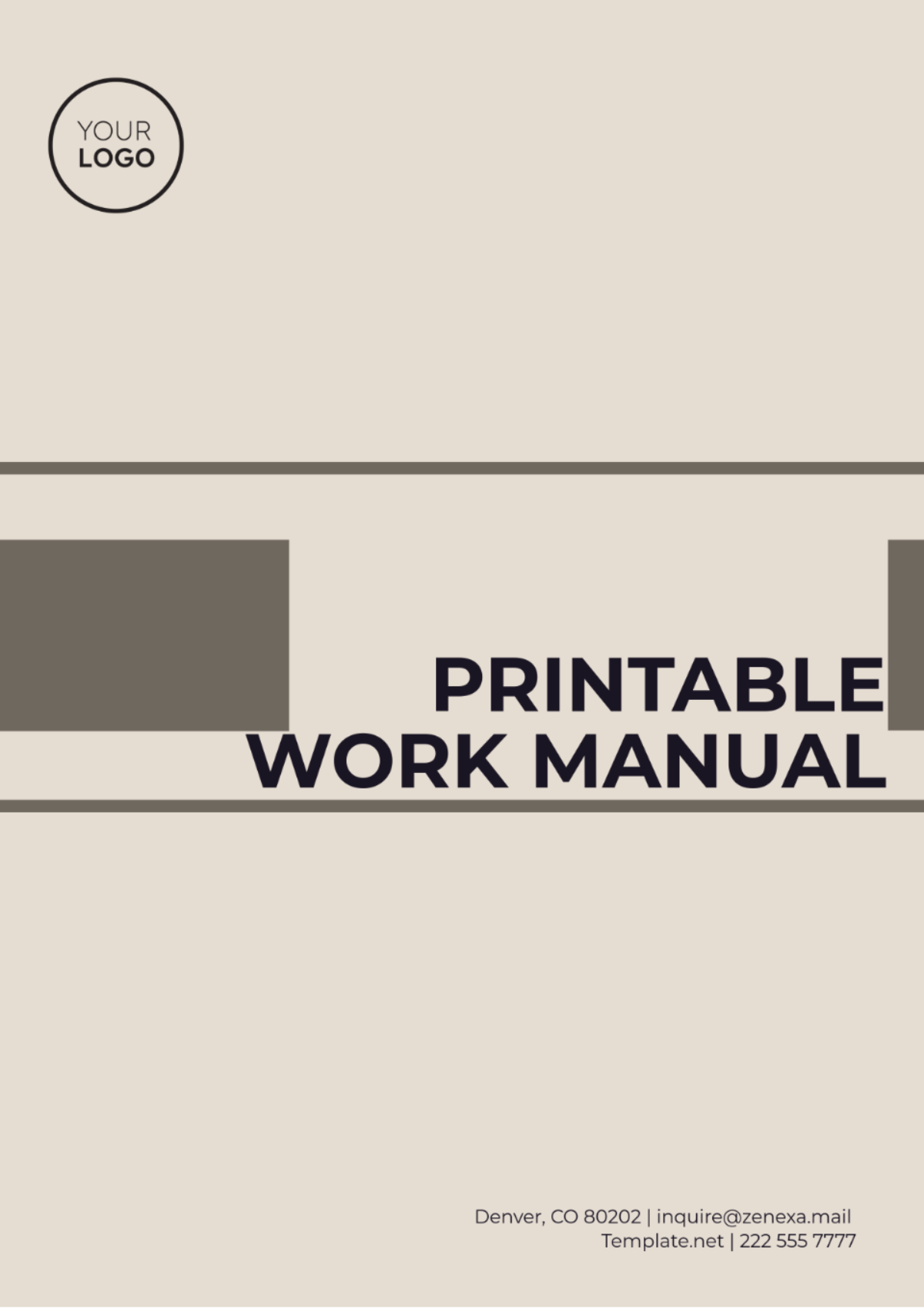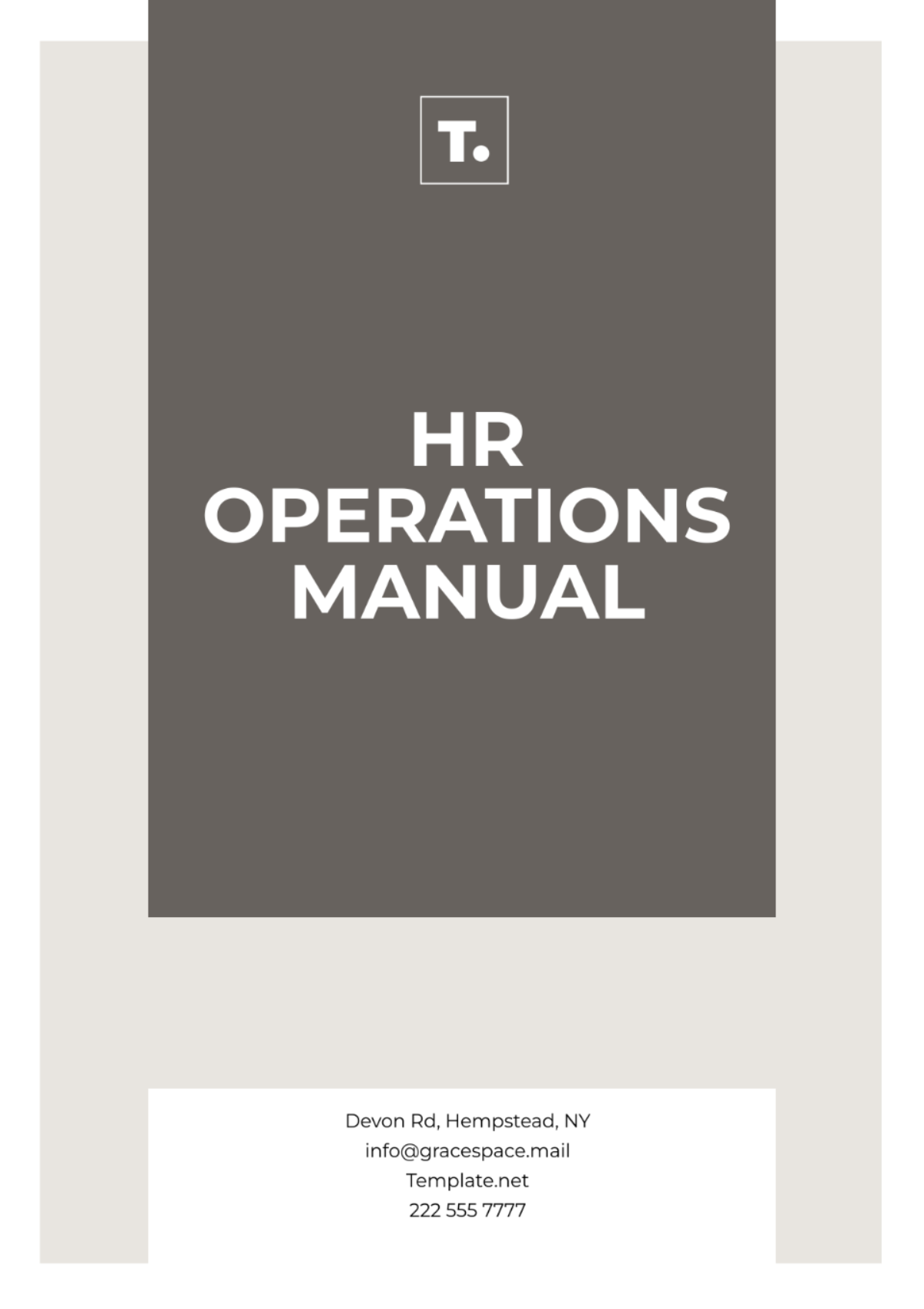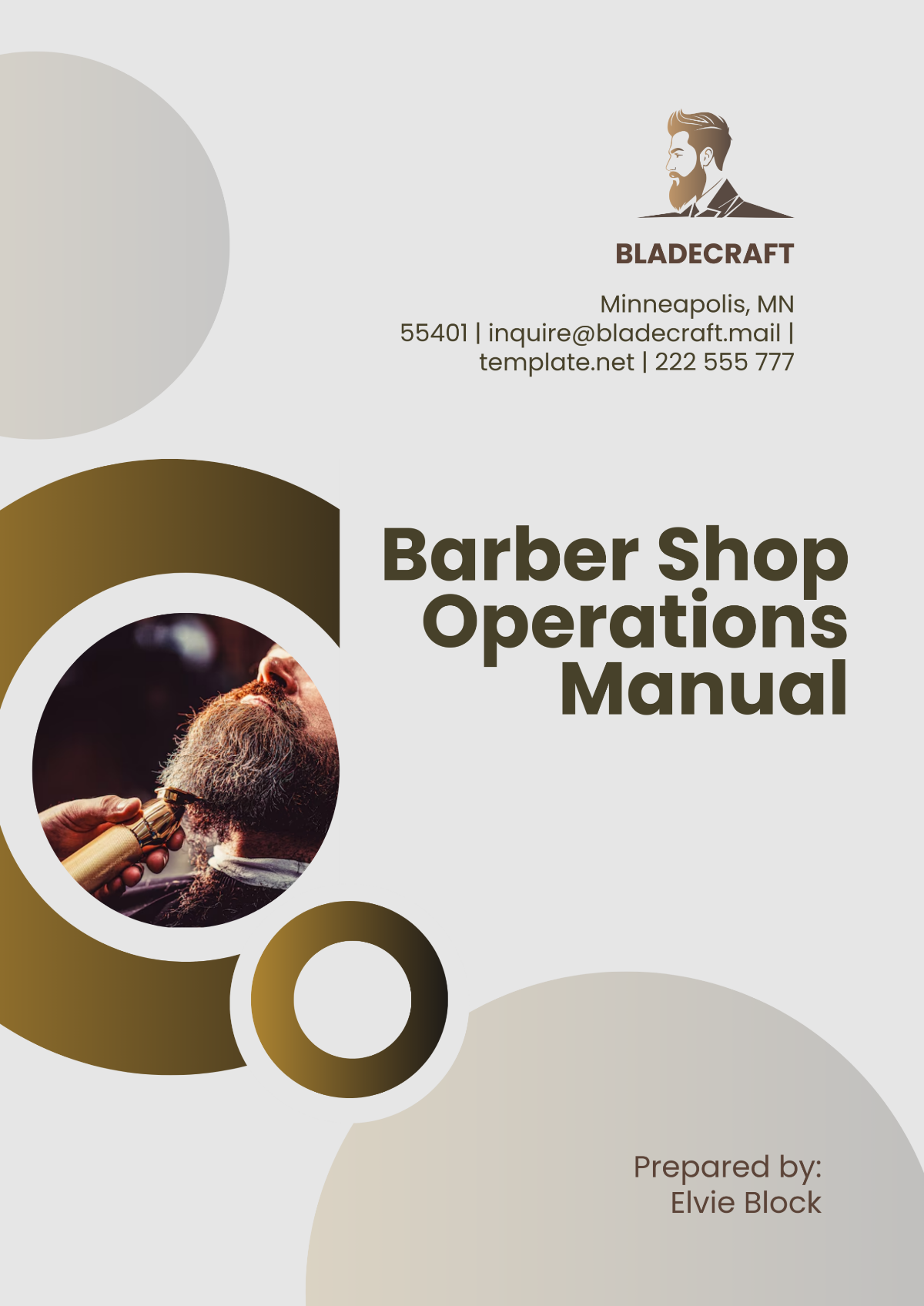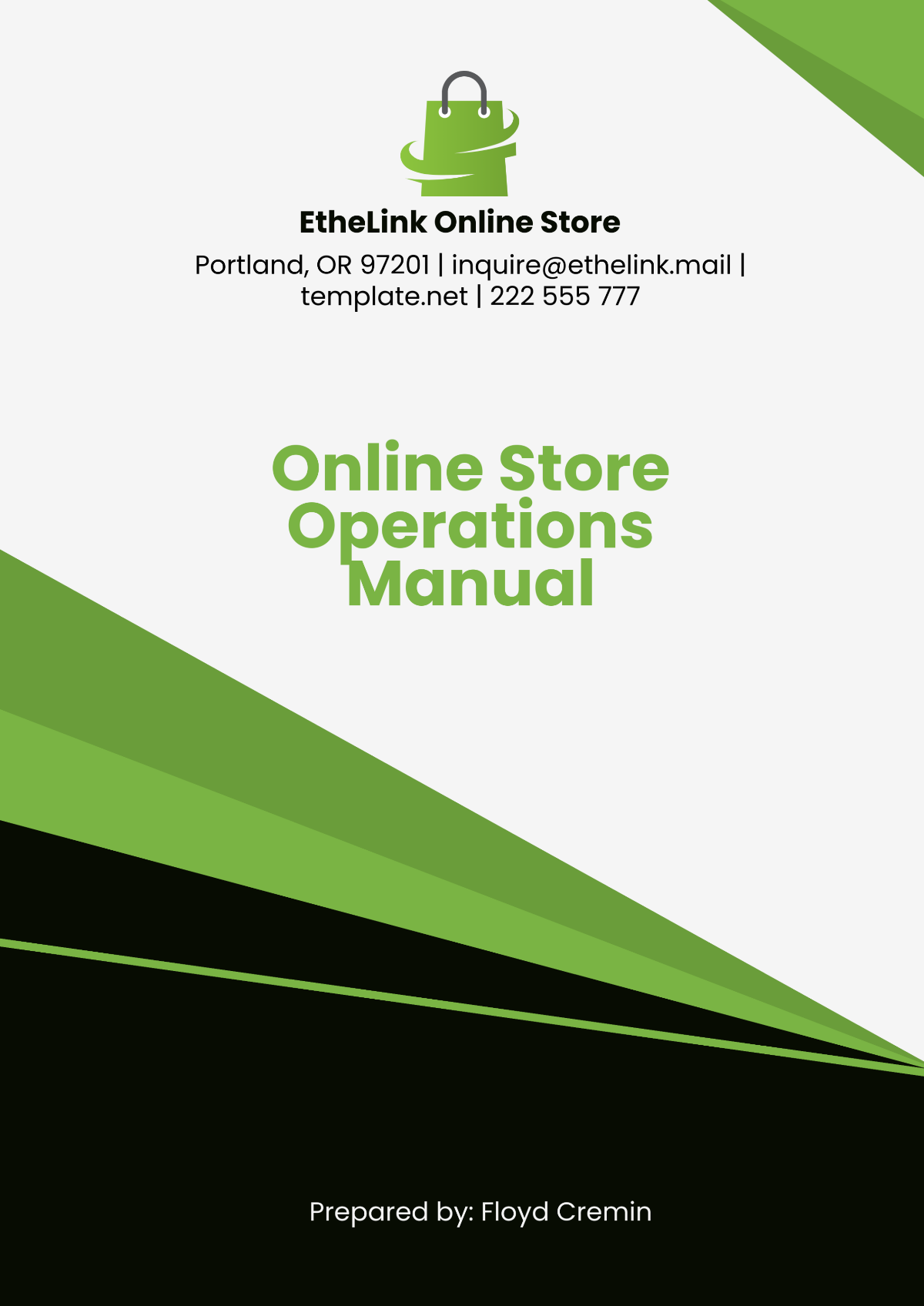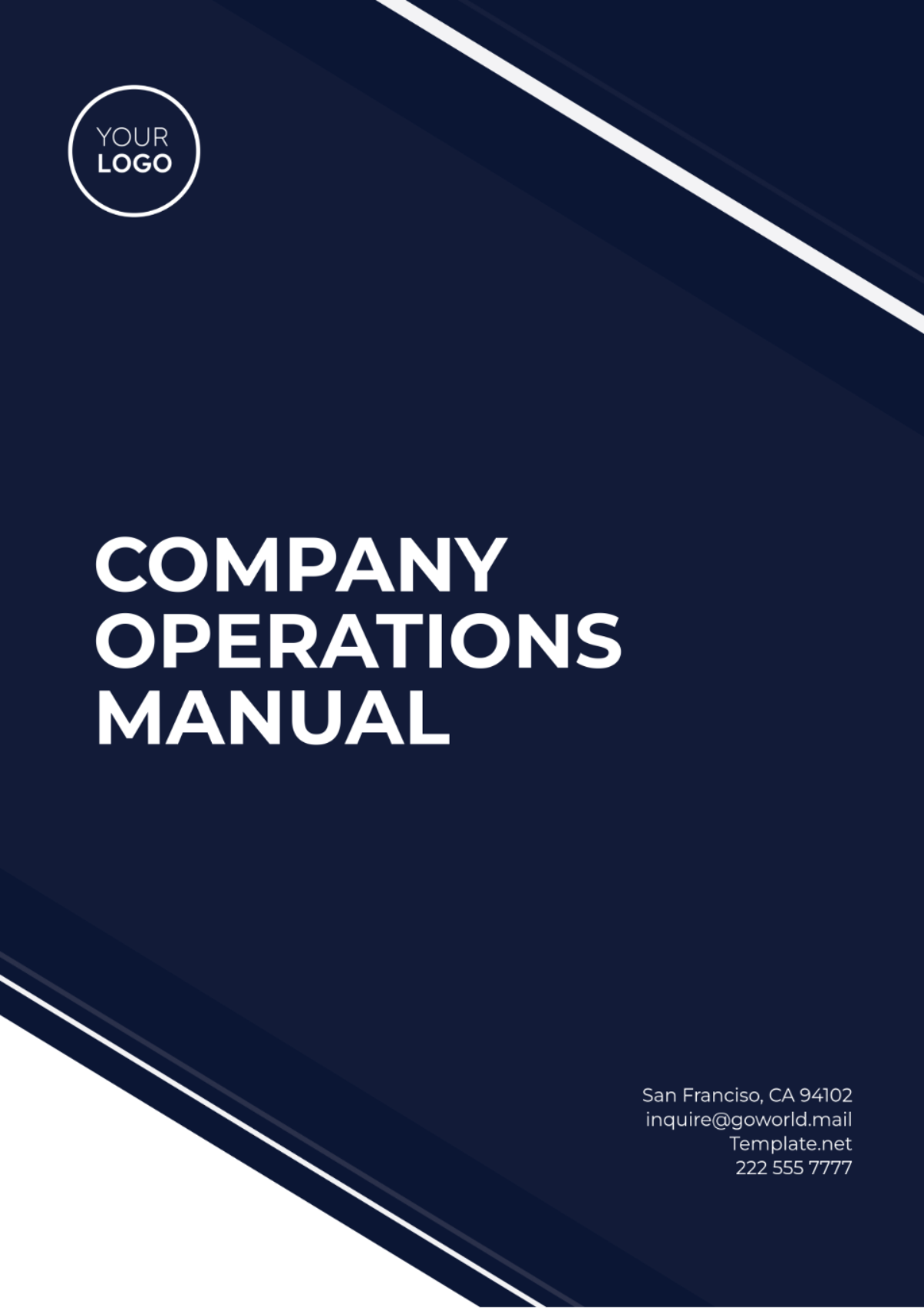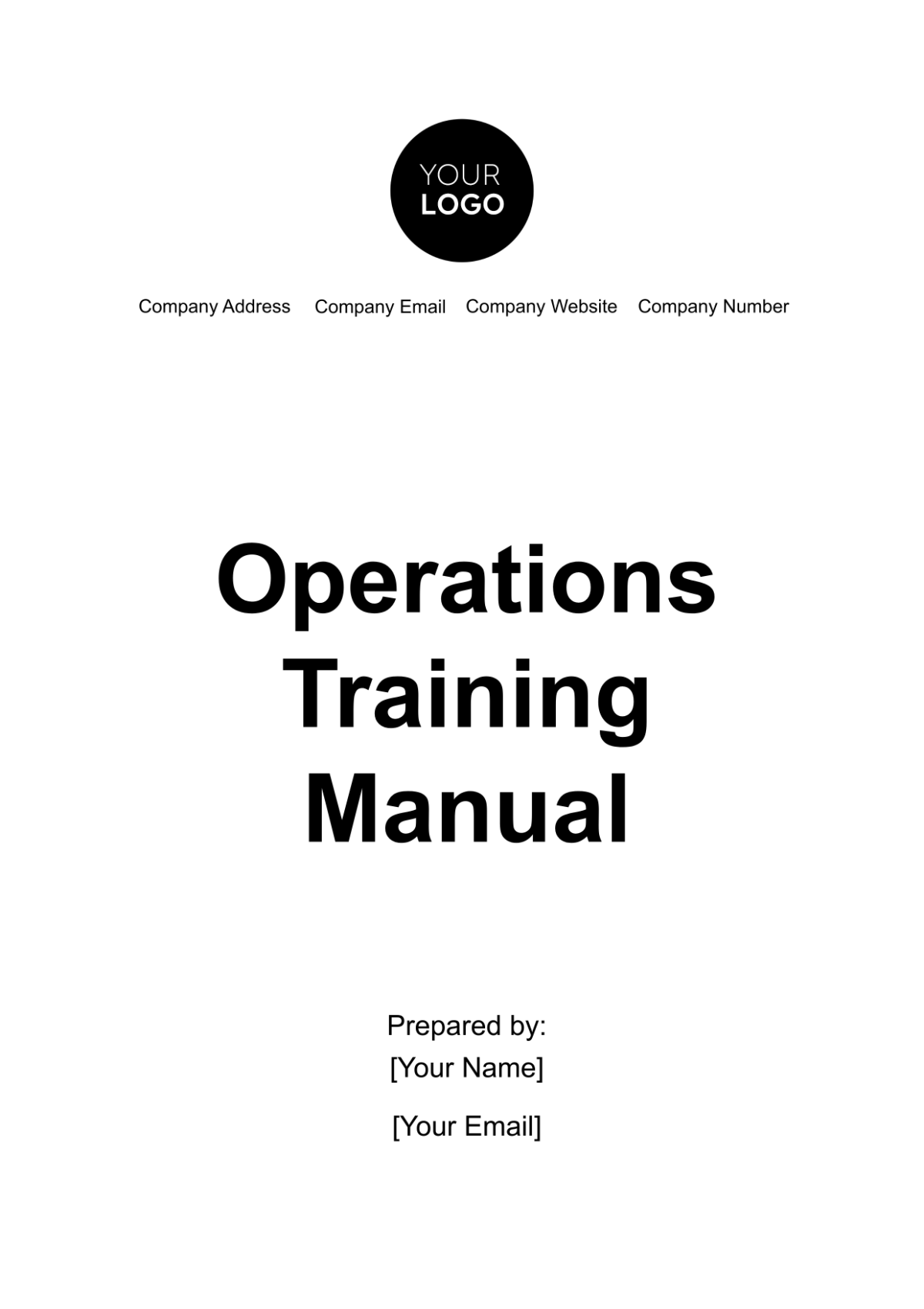Cleaning Services Operations Manual
I. Introduction
A. Purpose of the Manual
The primary purpose of this comprehensive manual is to guide and standardize our cleaning services operations. By providing clear instructions, it ensures that all employees understand their roles, responsibilities, and performance expectations. Additionally, this manual serves as a valuable resource during training and as a reference tool for existing staff.
B. Importance
Quality Assurance and Consistency: Consistency in our services is vital for client satisfaction. This manual establishes uniform procedures, minimizing variations and enhancing the overall quality of our work.
Risk Mitigation: Clear guidelines reduce the risk of errors, accidents, and misunderstandings. By adhering to these standards, we prioritize safety and minimize liability.
Legal Compliance: Employment laws and regulations evolve. This manual ensures that our practices align with legal requirements, protecting both the company and its employees.
C. Target Audience
Cleaning Technicians: These guidelines directly impact daily tasks. From room cleaning to specialized services, technicians rely on this manual for accurate procedures.
Supervisors and Managers: Supervisors use this manual for training, supervision, and performance evaluation. Managers refer to it for policy enforcement and consistency.
Human Resources Personnel: HR professionals utilize this manual during onboarding, policy communication, and addressing employee queries.
II. Company Overview
A. Mission Statement
At [Your Company Name], our mission is clear: to provide exceptional cleaning services that exceed client expectations. We achieve this by maintaining high standards, using efficient processes, and prioritizing client satisfaction. Our commitment extends beyond cleanliness; it encompasses creating safe and healthy environments.
B. Core Values
Quality: We take pride in our work. Every task, whether routine or specialized, reflects our commitment to excellence. Quality is non-negotiable.
Reliability: Clients trust us to deliver consistently. Reliability means showing up on time, following procedures, and exceeding expectations.
Integrity: Honesty, transparency, and ethical conduct define our interactions. We build trust with clients, colleagues, and the community.
Safety: The well-being of our team and clients is paramount. We adhere to safety protocols, use proper equipment, and prioritize risk prevention.
III. Staff Roles and Responsibilities
A. Cleaning Technicians
Daily Cleaning Tasks
1.1. Room Maintenance: Our dedicated cleaning technicians perform essential daily tasks, ensuring that rooms are spotless and inviting. This includes dusting surfaces, vacuuming carpets, and mopping hard floors.
1.2. Restroom Sanitation: Thoroughly cleaning and disinfecting restrooms is a critical responsibility. From sinks to toilets, our technicians maintain hygiene and cleanliness.
1.3. Trash Removal: Emptying trash bins promptly and disposing of waste properly contributes to a tidy environment.
Specialized Cleaning Services
2.1. Carpet Cleaning: Our skilled technicians handle carpet maintenance. They vacuum thoroughly, treat stains effectively, and ensure carpets remain fresh and stain-free.
2.2. Window Washing: Crystal-clear windows enhance the overall appearance. Our technicians clean both sides of windows, leaving them streak-free.
2.3. Deep Cleaning Projects: Periodic deep cleaning tasks, such as baseboard cleaning, upholstery care, and grout scrubbing, maintain a high standard of cleanliness.
Client Interaction
3.1. Professional Conduct: Our technicians represent our company. They interact courteously with clients, addressing any queries or concerns.
3.2. Addressing Client Requests: Listening actively and responding promptly to client requests ensures exceptional service delivery.
B. Supervisors
Quality Assurance
1.1. Inspections: Our diligent supervisors regularly inspect work areas. They ensure compliance with cleaning standards, identifying areas for improvement.
1.2. Feedback and Training: Providing constructive feedback to cleaning technicians is essential. Supervisors also organize training sessions to enhance skills and efficiency.
Scheduling and Coordination
2.1. Task Assignment: Supervisors assign cleaning tasks strategically, considering workload and technician availability.
2.2. Coverage Management: Ensuring adequate staffing levels for efficient service delivery is crucial. Supervisors coordinate schedules effectively.
Training and Development
3.1. Onboarding New Staff: Supervisors oversee the onboarding process, ensuring new hires understand company policies and procedures.
3.2. Ongoing Training Programs: Regular training sessions enhance skills, safety awareness, and customer service.
IV. Cleaning Procedures
A. Room Cleaning
Bedrooms
1.1. Linens and Surfaces: Our meticulous approach involves changing bed linens and thoroughly dusting bedroom furniture. Vacuuming carpets and sweeping/mopping hard floors maintain a fresh environment.
1.2. Floor Care: Proper floor maintenance ensures cleanliness and safety.
1.3. Trash Disposal: Regularly emptying trash bins prevents clutter and promotes hygiene.
Bathrooms
2.1. Sanitization: Meticulously clean and disinfect bathroom surfaces, including sinks, toilets, and showers. Restocking supplies ensures convenience for users.
2.2. Mirror Cleaning: Spotless mirrors enhance the overall appearance of bathrooms.
Common Areas
3.1. Surface Wiping: Wiping down communal surfaces (tables, countertops, etc.) removes dust and maintains cleanliness.
3.2. Trash Management: Regularly emptying trash bins in common areas ensures a clutter-free environment.
3.3. Floor Maintenance: Sweeping and mopping common area floors maintain a polished look.
B. Specialized Services
Carpet Cleaning
1.1. Vacuuming and Stain Removal: Thoroughly vacuum carpets, paying attention to high-traffic areas. Effective stain removal techniques keep carpets looking pristine.
1.2. Deep Cleaning: Periodic deep cleaning ensures longevity and freshness.
Window Washing
2.1. Interior and Exterior Cleaning: Clean both sides of windows, ensuring clear views for occupants.
2.2. Streak-Free Finish: Using proper techniques, we leave windows spotless.
Other Specialized Tasks
3.1. Upholstery Cleaning: Regular upholstery care maintains fabric-covered furniture.
3.2. Grout Scrubbing: Removing dirt and stains from tile grout enhances overall cleanliness.
3.3. Baseboard Cleaning: Wiping down baseboards ensures a polished appearance.
V. Safety and Health
A. Chemical Handling
Proper Dilution and Usage
1.1. Manufacturer Instructions: Our cleaning technicians must meticulously follow manufacturer instructions when handling cleaning chemicals. Proper dilution ensures effective cleaning without compromising safety. For instance, when preparing disinfectants, they should mix the correct proportions to maintain efficacy.
1.2. Personal Protective Equipment (PPE): Technicians wear appropriate PPE, such as gloves and goggles, to protect themselves during chemical handling. Gloves prevent skin contact, and goggles shield their eyes from splashes or fumes.
Storage and Labeling
2.1. Secure Storage: Chemicals must be stored securely, away from direct sunlight and extreme temperatures. Proper storage prevents accidental spills and exposure. For example, flammable chemicals should be kept away from heat sources.
2.2. Clear Labeling: Clearly labeled containers prevent mix-ups and accidental use of the wrong chemicals. Labels should include hazard warnings, emergency contact information, and handling instructions.
Emergency Procedures
3.1. Spill Response: In case of chemical spills, technicians should know the proper steps to contain and clean up the spill safely. This includes using absorbent materials, notifying supervisors promptly, and following established spill response protocols.
3.2. First Aid Awareness: Technicians receive basic first aid training to address minor injuries promptly. They should know the location of first aid kits and emergency eyewash stations within the facility.
B. Ergonomics
Lifting Techniques
1.1. Bend Knees, Not Back: When lifting heavy equipment or supplies, technicians should bend their knees and avoid straining their back. Proper lifting techniques prevent musculoskeletal injuries. For instance, when moving heavy vacuum cleaners, they should squat down and lift with their leg muscles.
1.2. Use Lifting Aids: For bulky items, technicians should use trolleys or lifting aids to prevent injuries. Pushing rather than pulling heavy loads reduces strain on their back and shoulders.
Rest Breaks and Posture
2.1. Avoid Overexertion: Regular rest breaks prevent fatigue and reduce the risk of strain. Technicians should take short breaks to stretch and rest their muscles. For example, after a few hours of continuous cleaning, they should pause and hydrate.
2.2. Proper Posture: Technicians should maintain proper posture while cleaning to prevent back and neck pain. This includes adjusting workstations to ergonomic heights and avoiding prolonged bending or twisting.
Hydration and Nutrition
3.1. Stay Hydrated: Proper hydration is essential during physically demanding tasks. Technicians should drink water regularly to prevent dehydration, especially in hot or humid environments.
3.2. Balanced Diet: Eating nutritious meals supports overall well-being. A diet rich in fruits, vegetables, and protein helps maintain energy levels and supports muscle health.
Safety Reporting: Technicians should promptly report any safety concerns or incidents to their supervisors. Open communication ensures timely resolution of safety issues and promotes a safer work environment.
VI. Equipment Inventory
The following table outlines the essential equipment and supplies used in our cleaning services. Each item plays a crucial role in maintaining cleanliness, efficiency, and safety. Let’s delve into the details:
Item | Purpose | Maintenance Frequency |
|---|---|---|
Vacuum Cleaners | Efficiently remove dirt, dust, and debris from carpets and floors. | Weekly |
Mops and Buckets | Used for wet mopping and floor cleaning. | After Each Use |
Microfiber Cloths | Ideal for dusting, wiping surfaces, and polishing. | Daily |
Window Cleaning Supplies | Includes squeegees, scrubbers, and cleaning solutions for streak-free windows. | As Needed |
Trash Bags and Bins | Essential for waste disposal. | As Needed |
Cleaning Carts and Trolleys | Conveniently transport supplies and equipment. | Monthly |
Regular maintenance of vacuum cleaners is critical. Clean filters, check cords, and inspect brush rolls to ensure optimal suction power. A malfunctioning vacuum can lead to inefficient cleaning and client dissatisfaction.
Properly cleaned and sanitized mops also prevent the spread of germs. Regularly wash mop heads and replace them when worn. Buckets should be disinfected to avoid cross-contamination.
Microfiber cloths on the other hand, reduce the need for chemical cleaners. Wash them after each use to maintain their effectiveness. Microfiber technology traps dust and particles efficiently.
Moreover, streak-free windows enhance the overall appearance of any facility. Regularly replace worn squeegee blades and keep scrubbers clean for optimal results. Proper waste disposal prevents odors and maintains hygiene. Regularly empty bins and replace trash bags to avoid overflow and pests.
Effective equipment management ensures consistent cleaning standards, reduces downtime, and enhances staff productivity. Well-maintained tools contribute to client satisfaction and a positive reputation for [Your Company Name].
Efficient inventory control prevents shortages and wastage. It also minimizes disruptions during cleaning tasks. By prioritizing equipment maintenance and replacement, we uphold our commitment to excellence.
Remember, our cleaning services are only as effective as the tools we use. Let’s continue to invest in quality equipment and maintain it diligently.
VII. Client Communication
The following table outlines key aspects of client communication within our cleaning services. Effective communication with clients is essential for maintaining strong relationships, understanding their needs, and ensuring satisfaction. Let’s explore each item in detail:
Item | Details |
|---|---|
Initial Consultation | Meet with clients to discuss cleaning requirements, expectations, and preferences. |
Regular Updates | Provide periodic updates on cleaning progress, any challenges encountered, and completed tasks. |
Feedback Channels | Create channels (e.g., email, phone, surveys) for clients to share feedback, concerns, or requests. |
Emergency Communication | Establish protocols for urgent situations (e.g., spills, accidents). |
Quality Assurance Checks | Conduct regular inspections and communicate results to clients. |
A. Initial Consultation
The first meeting with a client is crucial. It’s an opportunity to actively listen, understand their specific cleaning needs, and tailor our services accordingly. By discussing expectations, preferred schedules, and any unique requirements, we set the stage for a successful partnership. Clear communication during this phase prevents misunderstandings later on.
B. Regular Updates
Consistent communication throughout the cleaning process is vital. Regularly updating clients on completed tasks, upcoming schedules, and any challenges encountered fosters transparency. It also allows clients to provide timely feedback or make adjustments if necessary. Our commitment to open communication builds trust and ensures client satisfaction.
C. Feedback Channels
Providing accessible channels for client feedback is essential. Whether through email, phone calls, or surveys, we encourage clients to share their thoughts. Positive feedback reinforces our efforts, while constructive criticism helps us improve. Actively listening to clients’ concerns and acting on their suggestions demonstrates our commitment to continuous enhancement.
D. Emergency Communication
In urgent situations (such as spills or accidents), clear communication is critical. Clients need to know whom to contact and how quickly we can respond. Establishing emergency protocols ensures that we address unforeseen incidents promptly, minimizing disruptions and maintaining client confidence.
E. Quality Assurance Checks
Regular inspections serve two purposes: First, they verify that our cleaning meets or exceeds expectations. Second, sharing inspection results with clients demonstrates our commitment to quality. If any issues arise, addressing them promptly shows responsiveness and dedication to client satisfaction.
Effective client communication directly impacts our reputation, client retention, and overall success. By actively engaging with clients, we build lasting relationships, adapt to their evolving needs, and continuously improve our services. Clear communication is not just a process—it’s the heartbeat of our cleaning business.
VIII. Emergency Procedures
A. Fire Safety
Evacuation Routes
1.1. Know Exit Paths: Technicians must be familiar with evacuation routes in the building. They should participate in fire drills to practice evacuation procedures. For example, they should know the nearest exit from each work area.
1.2. Assemble at Designated Areas: In case of fire, technicians should assemble at designated safe areas away from the building. This ensures accountability and safety during emergencies.
Fire Extinguishers
2.1. Usage Knowledge: Technicians should understand how to operate fire extinguishers. They should know the PASS technique (Pull, Aim, Squeeze, Sweep) for effective fire suppression. For instance, if they encounter a small fire in an office trash bin, they can use the fire extinguisher to control it.
2.2. Evacuation Priority: If unable to control the fire, technicians prioritize evacuation over firefighting. Personal safety comes first, and they should not endanger themselves by attempting to extinguish a large fire.
Emergency Contacts: Technicians should have access to emergency contact numbers for fire departments, medical services, and building management. These contacts should be readily available and posted in visible areas within the facility.
Smoke Detectors and Alarms: Technicians should be aware of the location of smoke detectors and fire alarms within the premises. Regular testing and maintenance of these devices are essential for early fire detection and timely evacuation.
IX. Reporting and Documentation
A. Incident Reports
Accidents or Injuries
1.1. Detailed Documentation: Our cleaning technicians must meticulously document all accidents or injuries. This includes recording the nature of the incident, the individuals involved, and any medical attention provided. For example, if a technician slips and sustains a minor cut while cleaning a restroom, they should document the incident in detail.
1.2. Supervisor Notification: Technicians inform their supervisors immediately. Quick reporting ensures timely intervention and proper follow-up. The supervisor may need to file an incident report with higher management or regulatory authorities.
Equipment Malfunctions
2.1. Timely Reporting: If equipment malfunctions or becomes unsafe, technicians report it promptly. This includes malfunctioning vacuum cleaners, broken mop handles, or faulty electrical outlets. For instance, if a vacuum cleaner suddenly stops working during a cleaning task, the technician should notify their supervisor.
2.2. Repair Coordination: Supervisors arrange for repairs or replacements. Technicians should not attempt to use malfunctioning equipment. Proper documentation ensures that maintenance tasks are prioritized.
Consumables Usage Records
3.1. Cleaning Product Consumption: Technicians track the usage of cleaning products (e.g., disinfectants, glass cleaners). This data informs purchasing decisions and ensures adequate stock levels.
3.2. Paper Product Replenishment: Monitoring paper towel and toilet paper usage ensures timely restocking. Technicians record when supplies are replenished to maintain consistency.
B. Inventory Management
Stock Control
1.1. Regular Audits: Technicians conduct regular audits of cleaning supplies and equipment. They check stock levels and reorder as needed. For example, if the supply of disinfectant wipes is running low, technicians should request replenishment promptly.
1.2. Usage Tracking: Keeping records of product usage helps optimize inventory management. Technicians note when supplies are opened and used. This prevents overstocking or shortages.
Equipment Maintenance Logs
2.1. Scheduled Maintenance: Technicians maintain logs for equipment maintenance. This includes cleaning schedules, filter replacements, and lubrication. For instance, if a floor buffer requires oiling every month, technicians should document each maintenance activity.
2.2. Repair History: Documenting repairs ensures a historical record. It helps identify patterns and informs decisions on equipment replacement. For example, if a vacuum cleaner undergoes frequent repairs, it may be more cost-effective to replace it.
Consumables Requisition Process
3.1. Request Procedures: Technicians follow established procedures for requesting consumables. This includes submitting requisition forms or notifying supervisors.
3.2. Approval Workflow: Supervisors review and approve consumables requests. Proper documentation ensures transparency and accountability.
X. Conclusion
Effective reporting and documentation are essential for maintaining high standards in our cleaning services. By meticulously recording incidents, tracking inventory, and documenting equipment maintenance, we ensure consistency, safety, and operational efficiency. Our commitment to thorough reporting contributes to the success of [Your Company Name]. Let’s continue to uphold these standards and create a cleaner, safer environment for our clients and team.



